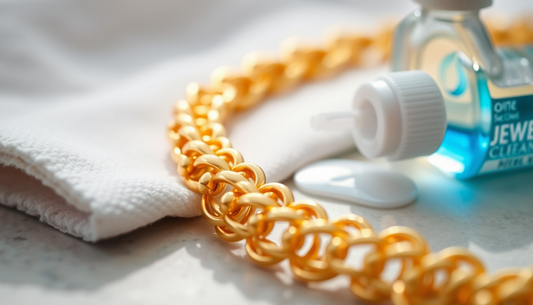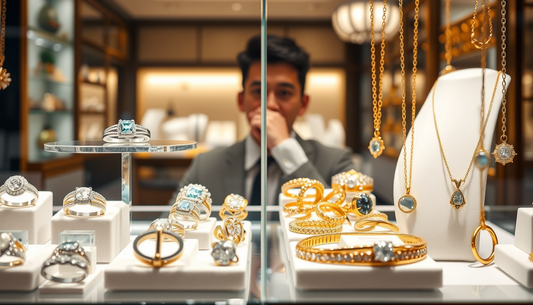
How to Identify an Authentic Emerald: A Practical Guide
Share
How can I tell if an emerald is real? This is a question that many people ask themselves, especially when it comes to purchasing a piece of jewelry of this type. Emeralds are precious stones coveted for their beauty and value, but they are also easy to counterfeit. In this article, we will provide you with a practical guide so that you can identify an authentic emerald and avoid being a victim of fraud.
Understanding the Characteristics of Natural Emeralds
Emeralds are a variety of the mineral beryl, which is characterized by its deep green color. This color is due to the presence of chromium and/or vanadium in its chemical composition. Natural emeralds are formed in the earth's crust under specific temperature and pressure conditions.
Some of the key characteristics of natural emeralds are:
Color
Colour is probably the most distinctive feature of emeralds. A deep, bright green, with shades ranging from blue-green to yellowish-green, is typical of high-quality emeralds. The more intense and uniform the colour, the more valuable the stone.
Inclusions
Natural emeralds almost always contain inclusions, which are small imperfections or irregularities within the stone. These inclusions are caused by the geological processes that result in the formation of the emerald. Some common inclusions are fractures, crystals, trapped liquids or gases.
Hardness
Emeralds have a hardness of 7.5 to 8 on the Mohs scale, making them relatively hard but also brittle. This means they can easily break or chip if not handled carefully.
Cut and Size
Natural emeralds are often irregularly shaped, so they require specialized cutting and carving to enhance their beauty. A good cut and cut can significantly enhance the appearance of an emerald.
How to Identify an Authentic Emerald
Now that you know the basic characteristics of natural emeralds, let's see how you can identify an authentic emerald:
1. Examine the Color
Start by looking closely at the stone's color. A natural emerald will have a deep, bright green color, with no blemishes or discolorations. If the color looks too uniform or "perfect," it may be an indication that the stone has been treated or is synthetic.
2. Look for Inclusions
Inspect the stone with a magnifying glass or microscope. Natural emeralds almost always have inclusions, such as fractures, crystals, trapped liquids or gases. These inclusions are evidence of authenticity, as synthetic emeralds are usually cleaner and free of blemishes.
3. Perform Hardness Tests
You can perform a simple hardness test using a razor blade or a pointed object. Gently scrape the surface of the stone. If it scratches easily, it is probably not a genuine emerald, as emeralds have a relatively high hardness.
4. Check the Cut and Size
Look at how the stone is cut and shaped. Natural emeralds often have irregular shapes, so a perfect cut and shape can be a sign that the stone is synthetic or treated.
5. Consult an Expert
If you still have doubts about the authenticity of your emerald, it is best to have it evaluated by a gemologist or jewelry expert. They will be able to perform more advanced tests, such as spectroscopic analysis, to determine with certainty whether it is a natural emerald.
Care and Maintenance of Authentic Emeralds
Once you have identified an authentic emerald, it is important to properly care for and maintain it to preserve its beauty and value. Here are some tips:
Avoid Exposure to Chemicals
Emeralds are susceptible to acids and other chemicals, which can damage their surface and color. Avoid exposing them to cleaning products, perfumes, sweat, and other chemicals.
Clean with Care
To clean your emerald, use a soft, damp cloth. Avoid rubbing too hard, as this may scratch the surface. Never immerse the stone in water.
Keep in a safe place
When not wearing your emerald, store it in a case or cloth bag to protect it from bumps, scratches and dust.
By following these steps, you will be able to enjoy your authentic emerald for a long time, knowing that you have made a valuable investment.
Conclusion
Identifying a genuine emerald can seem like a challenge, but with the right knowledge and a little practice, you can do so with confidence. Remember to carefully examine the stone's color, inclusions, hardness, and cut. And if you have any doubts, don't hesitate to consult an expert. Properly caring for and maintaining your genuine emerald will ensure you can enjoy its beauty and value for years to come.



